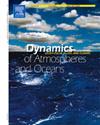奥里萨邦沿海和东北部地区热浪引起的体温调节压力:使用先进的统计和地理空间技术检查2024年4月的事件
IF 2
4区 地球科学
Q2 GEOCHEMISTRY & GEOPHYSICS
引用次数: 0
摘要
这项工作调查了2024年4月袭击奥里萨邦的非凡热浪,特别强调了沿海和内陆地区的强度和持续时间。如果这种模式出现在沿海地区,这是特别值得关注的,因为那里的气候舒适是由于靠近大海。从4月15日到30日,气温连续16天超过40°C,其中包括一些通常被认为不太容易受到极端高温影响的地区。本文的研究重点是天气特征和东北和沿海地区特殊异常的驱动因素。该研究利用1969年至2024年的历史温度数据集,根据IMD分类和第90百分位阈值应用热浪趋势。研究大气环流和垂直热结构的天气特征是本研究的主要范围。从收集的数据可以观察到,伴随着热岛效应,热浪的频率和强度正在加剧增加,并且它们与El Niño-La Niña的转变有关。与此同时,跨越植被和不透水表面的增加也导致了海风的延迟发生和沿海地区更高的热量保留。通过对UHI现象的定量分析,揭示了Thom's不适指数在热浪期间对该地区居民也表现出明显的不适,大多数地区的数值超过28,表明严重的不适程度。与之前在奥里萨邦进行的主要关注长期趋势或社会经济脆弱性的研究不同,本研究独特地应用高分辨率WRF模拟、卫星再分析和温度调节指数,在一个综合的、与操作相关的框架中捕捉2024年4月热浪的空间变异性、城市-沿海热相互作用和大气驱动因素。这些发现强调了制定适应性战略的紧迫性,例如城市规划改革(例如绿化和分区)、针对热阈值量身定制的预警系统以及针对特定区域的公共卫生干预措施,以保护奥里萨邦和类似沿海环境的弱势群体。本文章由计算机程序翻译,如有差异,请以英文原文为准。
Heatwave-induced thermoregulatory stress in Odisha's coastal and north-eastern districts: Examining the April 2024 event using advanced statistical and geospatial techniques
This work investigates the remarkable heatwave that struck Odisha in April 2024, with special emphasis on intensity and duration in the coastal and interior regions. It is of special concern if such patterns arise in coastal districts where comfortable weather is due to the proximity of the sea. There's been an uninterrupted recording of temperatures crossing 40°C for 16 consecutive days i.e., from the 15th to the 30th of April which includes some regions usually considered less vulnerable to extreme heat. The aim of this particular research is focused on synoptic features and focuses on drivers for the specific anomaly in northeastern and coastal districts. The study utilises the historical temperature dataset ranging from 1969 to 2024, applying the heat wave trends according to the IMD classification and 90th percentile threshold. The examination of synoptic features of atmospheric circulation along with vertical thermal structures is the main scope of this research. From data collection, it is observed that there is an exacerbating increase in the frequency and intensity of heat waves alongside UHI effects, and they are linked with transitions of El Niño–La Niña. Along with this, stepping over vegetation and the increase in impervious surfaces also led to delayed sea breeze onset and higher heat retention in coastal zones. With the quantitative analysis that was supplemented by the UHI phenomenon, it was revealed that Thom's discomfort index also displayed significant discomfort to the inhabitants of the area during the heatwave, with values exceeding 28 in most locations, indicating severe discomfort levels. Unlike prior research in Odisha that primarily focused on long-term trends or socio-economic vulnerability, this study uniquely applies high-resolution WRF simulation, satellite reanalysis, and thermoregulatory indices to capture the April 2024 heatwave’s spatial variability, urban–coastal thermal interactions, and atmospheric drivers in an integrated and operationally relevant framework. These findings underscore the urgency of developing adaptive strategies such as urban planning reforms (e.g., greening and zoning), early warning systems tailored to heat thresholds, and region-specific public health interventions to protect vulnerable populations in Odisha and similar coastal environments.
求助全文
通过发布文献求助,成功后即可免费获取论文全文。
去求助
来源期刊

Dynamics of Atmospheres and Oceans
地学-地球化学与地球物理
CiteScore
3.10
自引率
5.90%
发文量
43
审稿时长
>12 weeks
期刊介绍:
Dynamics of Atmospheres and Oceans is an international journal for research related to the dynamical and physical processes governing atmospheres, oceans and climate.
Authors are invited to submit articles, short contributions or scholarly reviews in the following areas:
•Dynamic meteorology
•Physical oceanography
•Geophysical fluid dynamics
•Climate variability and climate change
•Atmosphere-ocean-biosphere-cryosphere interactions
•Prediction and predictability
•Scale interactions
Papers of theoretical, computational, experimental and observational investigations are invited, particularly those that explore the fundamental nature - or bring together the interdisciplinary and multidisciplinary aspects - of dynamical and physical processes at all scales. Papers that explore air-sea interactions and the coupling between atmospheres, oceans, and other components of the climate system are particularly welcome.
 求助内容:
求助内容: 应助结果提醒方式:
应助结果提醒方式:


